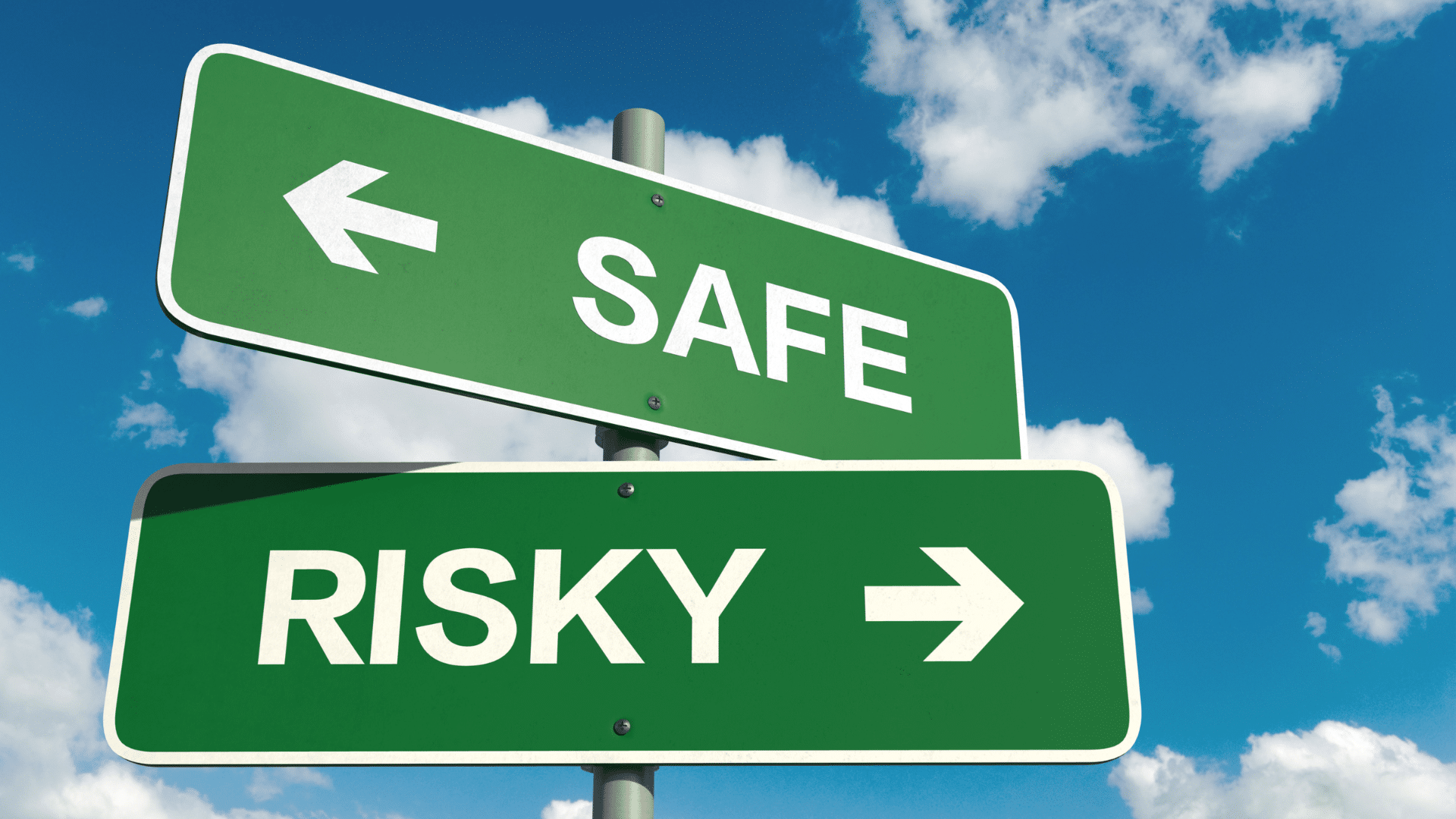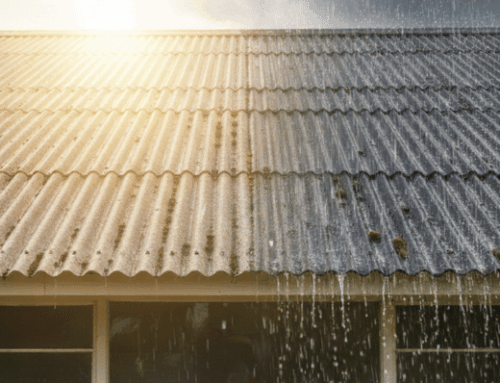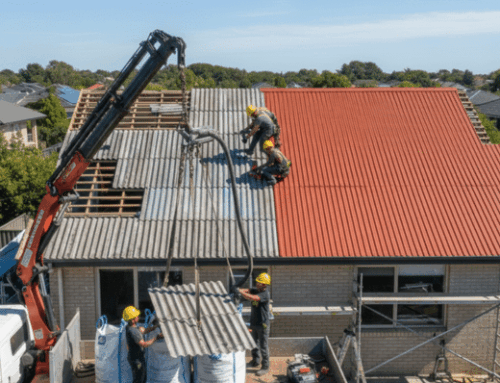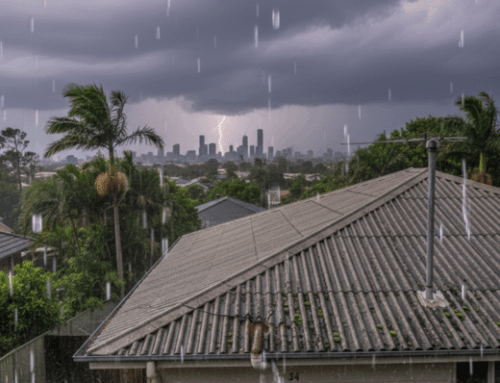Asbestos was once hailed as a miracle material in construction—lightweight, fire-resistant, and affordable. But decades later, we now understand its hidden dangers, particularly when used in roofing materials. For many homeowners, especially those in older homes across Australia, the question lingers: Is it safe to leave an asbestos roof up? The answer isn’t as simple as yes or no. It depends on the condition of the material, your location, legal obligations, and your long-term plans for the property.
Here’s everything you need to know to make an informed decision—and protect your family, property, and peace of mind.
What Happens If You Don’t Remove an Asbestos Roof?
Asbestos roofing materials, commonly used in Australia up until the 1980s, can remain in place without causing harm—but only if they’re undisturbed and in good condition. Problems begin when sheets become damaged or deteriorate due to weather, time, or renovation work. This can cause tiny asbestos fibres to become airborne. Once inhaled, these fibres can lodge deep into the lungs and lead to serious diseases, including asbestosis, lung cancer, and mesothelioma.
If you choose not to remove your asbestos roof, you’re essentially gambling with time. While some roofs may remain stable for years, others degrade faster depending on exposure to the elements, previous repairs, or poor installation practices.
The Real Risk: How Asbestos Roofing Affects Your Health
The health risk of asbestos is tied directly to friability—how easily the material crumbles or becomes airborne. While bonded asbestos cement roofing sheets are considered low-risk when intact, ageing, cracking, or renovations can convert a once-stable material into a friable and hazardous one.
Breathing in asbestos fibres can cause irreversible damage. These microscopic fibres can stay suspended in the air for hours and aren’t visible to the naked eye. Unlike dust or pollen, your body can’t expel them. They embed in the lungs and remain there for decades, slowly causing internal scarring, inflammation, and disease.
Disturbed, Damaged, and Dangerous: When Asbestos Roofs Become a Hazard
Many homeowners assume that if their roof “looks fine,” it must be safe. But visual inspections aren’t always enough. Age-related wear, hail damage, or even DIY repairs can disturb asbestos roofing sheets. Water ingress, rusted fasteners, and storm damage are often signs the material is degrading.
Even if you’re not actively disturbing the roof, wind, nesting animals, or nearby construction work can unintentionally release fibres. That’s why proactive inspection is essential—especially before installing solar panels, cleaning gutters, or planning renovations.
Is Your Roof Safe or a Silent Threat? Signs You Shouldn’t Ignore
Some warning signs of an unsafe asbestos roof include:
- Cracks or flaking in the sheeting
- Water staining on ceilings from leaks
- Discoloration or weathering on panels
- Loose or damaged fasteners
- Moss growth, which can hold moisture and speed up decay
If any of these apply to your roof, it’s time to seek a professional opinion. ICON Asbestos Roof Replacement offers licensed inspections and expert recommendations tailored to your roof’s condition and location.
Should You Remove or Leave It? Making the Right Call About Asbestos Roofing
In some cases, asbestos roofing may be safe to leave in place—temporarily. If the roof is structurally sound and not showing signs of damage, encapsulation (sealing the material with a protective coating) can be an option. However, encapsulation is not a permanent solution and does not eliminate the asbestos risk—it only delays it.
If you plan to sell your property, renovate, or stay long-term, removal and replacement may be the safest and most financially sound option. A deteriorating asbestos roof can affect property value, insurance premiums, and future resale.
Legal Risks and Local Laws: What NSW and Other States Require
Across Australia, the management of asbestos-containing materials is heavily regulated. In NSW, for example, SafeWork guidelines require property owners to safely manage or remove asbestos, especially in workplaces or rental properties.
DIY asbestos removal is not only dangerous—it’s illegal in many cases. Homeowners can only remove non-friable asbestos in small amounts (under 10m²), and even then, specific safety precautions are mandated. Larger jobs must be handled by licensed professionals. Ignoring these laws can result in hefty fines and legal consequences.
Why Professional Testing and Inspection Is a Must
The first step to managing an asbestos roof is knowing what you’re dealing with. That’s where professional asbestos testing and inspection services come in. Specialists use proper equipment to safely collect samples, test material composition, and determine friability.
Testing is especially critical if you’re unsure when your roof was installed or what materials were used. ICON Asbestos Roof Replacement provides comprehensive assessments and can guide you through your next steps—whether that’s removal, encapsulation, or routine monitoring.
The Cost of Waiting: Why Delaying Removal Could Be More Expensive
It’s easy to delay asbestos removal due to cost or inconvenience. But putting it off can lead to higher expenses down the line. Damaged roofing can:
- Increase the cost of eventual removal due to contamination
- Trigger emergency response fees in the case of a fibre release
- Lead to health claims if occupants are affected
- Lower your property’s marketability and value

Asbestos disposal itself is also regulated—meaning contaminated waste can’t be thrown out with general rubbish. The longer you wait, the more complicated (and costly) it becomes.
Encapsulation vs Removal: What’s Safer for Your Home and Family?
Encapsulation involves coating the roof with a sealing product that prevents fibres from escaping. This can be a temporary fix for roofs that are intact and rarely disturbed. However, if the roof is cracking, leaking, or otherwise compromised, encapsulation won’t solve the underlying risk.
Removal, when done by licensed professionals, ensures that all hazardous material is taken off-site and disposed of legally. It also opens the door for safer, more modern roofing options like metal roofing, which offers longevity, energy efficiency, and peace of mind.
ICON Asbestos Roof Replacement offers safe removal and high-quality metal roof replacement, restoring both safety and curb appeal to your home.
Finding the Right Help: How to Choose a Licensed Asbestos Removalist
Not all asbestos removalists are created equal. Always choose professionals who are:
- Fully licensed and insured
- Familiar with your state’s regulations
- Experienced in working with both residential and commercial roofs
- Equipped with proper protective gear and disposal procedures
Get quotes, check reviews, and ask about their safety record. A good removalist will also help you with permits, notifications, and clean-up procedures.
At ICON Asbestos Roof Replacement, we pride ourselves on delivering safe, efficient, and government-compliant asbestos roof removal and replacement services throughout NSW, Queensland, and beyond.
In Summary: Is it safe to leave an asbestos roof up? Technically, yes—but only under ideal conditions. In reality, asbestos roofing poses a long-term health and legal risk that most homeowners are better off managing proactively. Whether you’re concerned about fibre exposure, planning renovations, or just want peace of mind, don’t leave it to chance.
Contact a trusted professional like ICON Asbestos Roof Replacement to get a thorough assessment and explore your options. Your health, your home, and your future are worth it.




